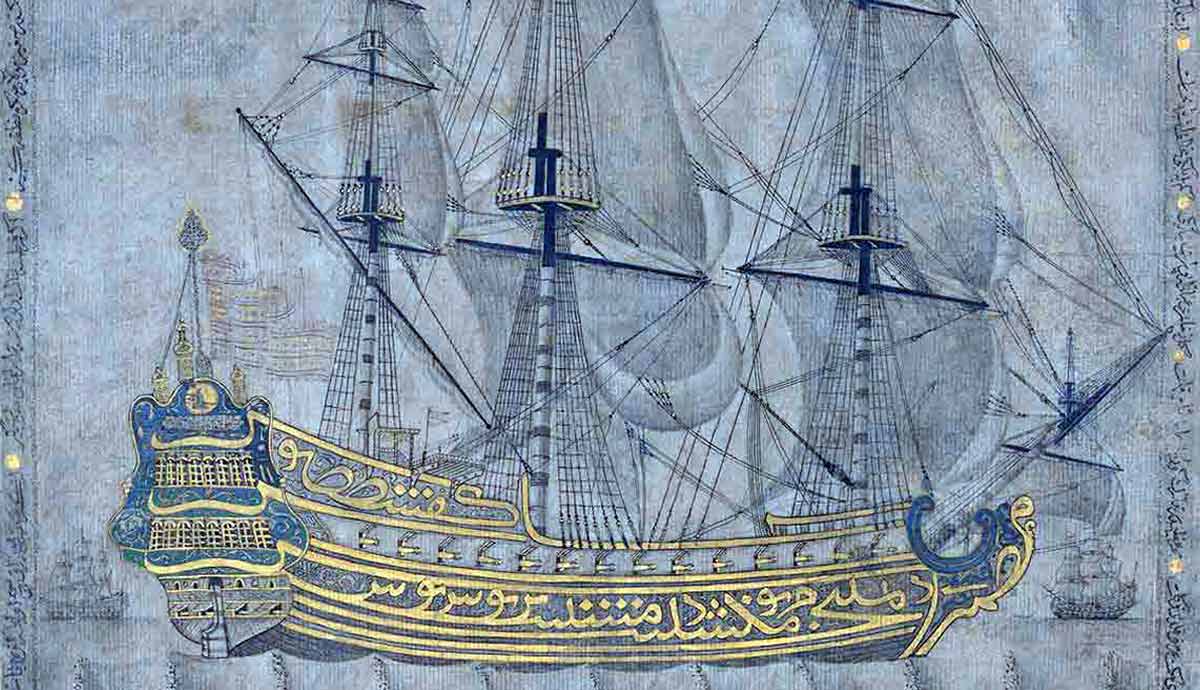Why Was the Galleon a Game Changer?
The word galeon is an import from Spanish to English, meaning armed merchant ship. The French word galion helped popularize the term. The Byzantines added galea, meaning galley or oared ship. The suffix -on makes the 16th-century ship sound daunting.What Came BeforeGalleon Nuestra Seora de la Mar. Source: WikimediaThe galleons development didnt appear out of the blue. Instead, this enormous type resulted from centuries worth of improvements. The galleons ancestors included the carrack, galley, caravel, and the fusta. Shipbuilders incorporated the best features of each type into the galleon. Carracks provided cargo space with lateen sails and rigging from caravels (speed) and finally, the galleys fighting ability.With a sleeker hull for speed, a lower superstructure for greater stability, and large gun decks, the galleon had arrived. Built first by the Portuguese around 1515 and improved by the Spanish, Europes maritime dominance began.A Design of Precision and Tactical ChangesSpanish Galleon Firing Guns. Source: National Gallery of ArtWith new features and inherited architecture, galleons differed considerably from their forebears. Built for both trade and war, galleons needed to sail long distances, trade, or fight. Sometimes all three happened on a voyage; the ship needed to look formidable.Galleons structural features played a significant part. First came the tiered hull (for space and strength), square-rigged sails (for speed), and a rear mast with lateen sails (for maneuverability). Combined, these qualities made the galleon fast and stable for extended voyages with cargo. Also, the galleon could fight in shallow waters.The galleons size and better construction altered naval warfare. The multilevel decks meant more guns, sometimes dozens. Arranged in rows, the galleon fired broadsides, devastating its opponents. The concentrated fire replaced the age-old tactic of boarding actions.Builders of EmpireTurkish galleons circa 1650. Source: Wikimedia CommonsObtaining and keeping an empire is never an easy task-ask the Romans. For Europeans, especially the Spanish and Portuguese, the galleon became their naval backbone. Designed for fighting and transport, their Swiss Army knife utility proved crucial.With an average 500-ton displacement, a galleon outfitted for battle carried upwards of seventy cannons. The largest cannons were placed front and aft for pursuit; the rest would be positioned along the hull for broadsides. Crews plus marines varied during the 16th and 17th centuries, but could number up to 400! Merchant galleons carried significantly less armament and crew, their purpose being cargo haulers.Galleons led campaigns against Dutch, English, Ottoman, and Barbary foes in the Atlantic, Pacific, and Mediterranean. They served as escorts for convoys or treasury fleets, often considered pirate magnets. In fleet actions, with their heavy artillery and size, galleons frequently got positioned in the van. Whether symbols of imperial might or as floating castles, galleons helped build empires.Driving Imperial Trade and Control16th Century Chinese Silk with Royal Eagles. Source: The MetThe value of 150,000 tons represents the incredible estimated weight of Central American silver exported by the Spanish. Exported from and carried by heavily armed galleons, this silver bought Asian goods. Galleons on the return trip brought the trades crown jewel, Chinese silk. Other goods included Chinese and Japanese porcelains, spices, lacquerware, tea, and luxury items. Upon landing, the goods left Acapulco bound for Spain.The Manila Galleon trade established a true international network fully controlled by the Spanish Crown. The Crown used cargo caps (limiting the amount of goods) and merchant licenses. Next, pirates and enemy states sought these predictable convoys, particularly in the Caribbean. In 1521, the Crown levied the Averia Tax to fund the protection of these fleets, based on a percentage of the cargo value. Shepherding the convoys came the indispensable galleons. Their hybrid design allowed longer voyages and protection.Dutch galleon ships, possibly similar to those of the Spanish treasure fleet, by Cornelis Verbeeck, c. 1618. Source: National Gallery of Art, WashingtonBesides fostering trade, galleons created movement between cultures. These ships moved all kinds of people, for good or bad, between continents. Galleons brought New World agriculture to Europe and Asia, such as maize, tomatoes, and cocoa. Goods transported between the two inspired arts and influenced the culinary arts.Although built for long voyages, life aboard a galleon became known for its high mortality rates. A typical Manila to Acapulco crossing could last six plus months. Due to storms, disease, or starvation, sometimes half of the crew and passengers perished. However, the galleon arrived, proving the soundness of the types design and build.The Game Changed and ObsolescenceGalleon High Seas Rescue. Source: University of HawaiiFor two centuries, the galleon served to create trade routes, move goods, join societies, and battle opponents. For example, historians estimate 400 million silver pesos traded hands from 1565 to 1815. That alone shows the galleons game-changing. But all things change. By the late 17th century, ships like the frigate arrived. This outgunned and outmaneuvered the galleon, sounding its gradual demise.


